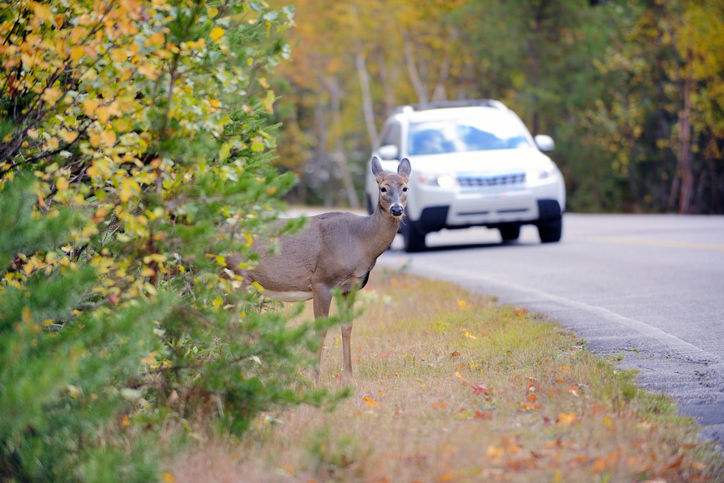Living close to nature has its advantages, but also some disadvantages that must be minimized so that humans can live in peace and safety.
The Ministère des Forêts, de la Faune et des Parcs suggests several ways of controlling the visits of annoying animals through the use of deterrents:
-
Repulsion: Repel the animal with repellents, which are products that affect the animals’ senses. There are visual repellents (scarecrows), sound repellents (propane gun), olfactory repellents (naphthalene) and gustatory repellents (thiram).
-
Capture and relocation: live capture using a cage requires some experience. It is strongly recommended that you call on specialists, which will involve costs, instead of attempting to handle a wild animal yourself. The animal is then moved and released at some distance from where it was captured.
For more information, visit the Wildlife section on the website of the ministère des Forêts, de la Faune et des Parcs and its section on Troublesome animals in urban areas.
To consult on this page
White-tailed deer

White-tailed deer have become familiar animals in rural and suburban landscapes. In order to observe them better or simply to take care of them, several people engage in winter feeding of deer for recreational purposes. Although motivated by good intentions, they sometimes ignore that the consequences of this practice can be negative. Have the well-being of deer at heart and let nature take care of them. They are wild animals that should remain so.
It is strongly recommended to avoid artificial feeding for the following reasons:
- Artificial feeding can cause several health problems in deer such as diarrhea and inflammation of the digestive system and gums.
- The animal becomes more at risk of carrying ticks near humans and transmitting them to its peers through physical contact.
- Contaminated objects, such as feeders where deer feed, can also promote disease transmission.
- The concentration of deer in urban areas has a significant impact on road safety. The fact that they move around the territory in search of feeders significantly increases the number of road accidents.
Wildlife corridor
The City of Mont-Tremblant has incorporated the concept of wildlife corridor to protect the habitat of the white-tailed deer. Thus, new land use designations have been established, namely:
- Residential and wildlife
- Wildlife corridor
The wildlife corridors have a width of approximately 200 meters in the narrowest areas. Therefore, while being in a peri-urban environment, the wildlife corridors must include the essential biophysical, topographical, and land use characteristics. This ensures the viability of movements for the white-tailed deer and other wildlife species.
The corridors must also contain all vegetation strata (trees, shrubs, herbaceous plants) and enough plant species that are part of the deer's diet.
Informations
- Feeding Virginia deer artificially in winter (French-language)
Black bears

Citizens who live near wooded areas are invited to adopt responsible behavior inspired by the following three golden rules:
- Never feed the bears.
- Store food and garbage out of their reach.
- Minimize odors associated with foodand garbage.
Tips for keeping bears away
Source: Ministère des Forêts, de la Faune et des Parcs
Near a wooded area
Due to the late appearance of wild berries in the forest, bears are approaching residential areas in search of food. Avoid attracting them.
- Do not feed wild animals and remove any source of food around your residence, including dog and cat food containers.
- Remember that fruit trees and bird feeders can be attractive to bears.
- Clean up after outdoor meals to eliminate food smells. Clean your barbecue thoroughly after use and keep it in a closed location.
- Keep your garbage and compost containers in a closed location (shed, garage) until the day of collection and retrieve them promptly afterward. Pour lime into your compost to make it less attractive to bears.
In the forest
The forest is the natural habitat of bears, they are at home there! They perceive the sudden arrival of a person as a threat. Adopt a cautious behavior.
- Do not go alone into the forest, as you will be louder in a group. Keep children close to you.
- Avoid traveling at dusk and be cautious near watercourses.
- Make your presence known by attaching a tinkling object to your backpack. Talk, sing, or whistle as you walk.
- Avoid carrying strongly scented food; if necessary, keep it in an airtight container.
- Keep in mind that bears have poor eyesight. If you encounter one, make large gestures and make noise so that the bear does not mistake you for another animal and identifies you as human.
- If the bear approaches, distract it by dropping objects and try to move away slowly.
In case of emergency, dial 1 800 463-2191 to reach SOS poaching.
Informations






